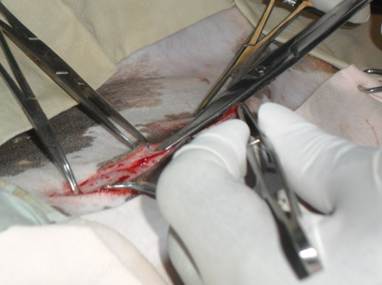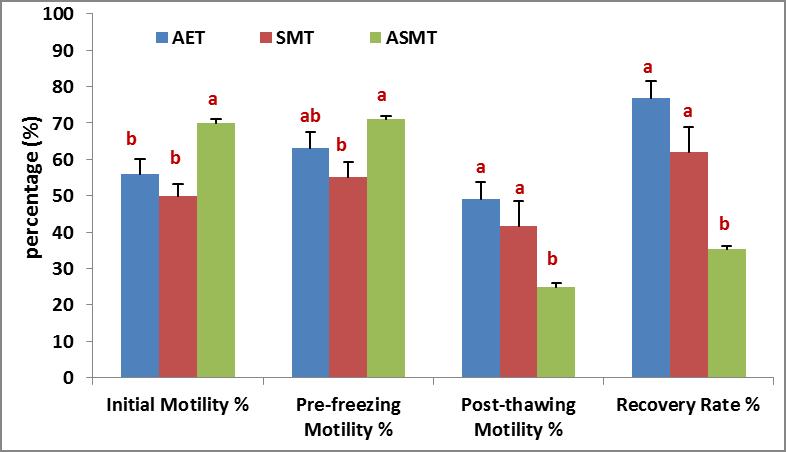Previous issue | Next issue | Archive
Volume 7 (3); September 25, 2017 [Booklet]
Adverse Effects of Chemotherapy in Dogs.
Cunha SCS, Silva FBF, Corgozinho KB, Silva KVG and Ferreira AMR.
World Vet. J. 7(3): 74-82, 2017; pii:S232245681700010-7
DOI: http://dx.doi.org/10.5455/wvj.20170896
ABSTRACT
Owners of dogs with cancer are often offered chemotherapeutic treatment. However, clients who seek veterinary care for pets with cancer are often concerned about the potential negative impact of chemotherapeutic treatments on their animals’ quality of life. The purpose of this retrospective case series was to investigate the delayed acute effects of chemotherapy drugs in dogs receiving cancer treatment and their owners’ opinions regarding chemotherapy acceptance by their pet. In this study, 292 dogs that were treated with chemotherapy as a definitive and/or adjuvant treatment for cancer. Medical records were reviewed to determine the chemotherapy agent used and if they had any delayed adverse effects or not. Side effects were classified according to VCOG-CTCAE grading of adverse effect severity veterinary co-operative oncology group. Lomustine, carboplatin, vincristine, doxorubicin, cyclophospha-mide, mitoxantrone, and vinblastine were administered in 16%, 20%, 15%, 18%, 16%, 8%, and 7% of the cases respectively. The most common adverse effects were neutropenia (22%), vomiting (21%), diarrhea (20%) and inappetence (20%). Cyclophosphamide and vincristine were the agents that had caused more adverse gastrointestinal effects, while lomustine was the drug that had caused more hematologic effects. In some dogs receiving lomustine and carboplatin, neutropenia (some of them severe) had occurred as early as in the sixth day. According to the current grading system of adverse effects induced by chemotherapy, general tolerance to chemotherapy is referred to as grade 1, which was observed in 83% of the cases. Owner opinion was positive in most cases, and 77% of the owners had evaluated that the treatment was well tolerated by their dogs. In contrast, 8% of the treatments were poorly tolerated and they had negatively impacted the affected dogs’ quality of life. Based on the data examined, we would recommend that gastrointestinal adverse effects must be prevented with antiemetic medication, especially in dogs receiving cyclophosphamide, vincristine, carboplatin and doxorubicin. Hematologic profile must be performed as early as in the 6-7th day after lomustine and carboplatin, as severe neutropenia can occur. Adverse chemotherapy effects may occur in about 20-25% of canine patients.
Key words: Canine, Oncology, Chemotherapy, Side effect, Tolerability
[Full text-PDF] [XML] [Import into EndNote] [Citations on Google Scholar]
Incubation Duration of Broiler Breeder Egg and Post Hatch Performance.
Jabbar A and Ditta YA.
World Vet. J. 7(3): 83-88, 2017; pii:S232245681700011-7
DOI: http://dx.doi.org/10.5455/wvj.20170897
ABSTRACT
Incubation duration is a most essential factor to achieve standard hatchability, water loss and chick yield.Ross-308 different breeder flocks which were 42-46 weeks old and standard eggs that weighed up to 55-60g were selected. In the current study, two experimental groups each consisting of (n= 538560) eggs were selected to investigate the effect of eggs incubation duration on hatchability and post-hatch performance. Therefore, this experiment was conducted in order to evaluate the exact duration of incubation and its effects on broiler performance at the farm. Group A was incubated for 444hrs in setter and 62 hrs in hatcher. Hatch pulling for A was performed twice 1st after 494 hrs and remaining un-hatch eggs were again shifted to hatchers for next 12 hrs for 2nd pulling (conventional method of hatch pulling in Pakistan). For B hatch pulling was performed after 456hrs in setters and 50 hrs in hatcher, complete hatch pulling only once. Eggs weight at transfer was (53.9±0.8gm and 54.9 ±0.6gm), water loss at transfer was (11.67±0.7% and 10.6±0.7%) and chick weight was at (41.6±0.3gm and 42.7±0.3gm) on day one were significantly better for group B than A respectively. Similarly, hatchability (86.16±1.02% and 85.16±1.02) and dead in shell (5.10 ±0.8% and 6.61±1.5%) were also significantly better for group B then A respectively. Candling (8.23±0.9% and 8.23±1.33%) was same for both groups. Mortality was estimated to be at (1.80±0.06and 2.47±0.23%), weight gain was determined to be at (2001.33±24.33gram and 1955.66±25.02gram), feed intake (g/bird) was at (3245.02±18.03 and 3260.51±13.47) and feed conservation ratio at day 35(1.44±0.02 and 1.716±0.03) were found to have been significantly better for B than A respectively. So, incubation of eggs for 456 hrs in setters and 50 hrs in hatchers, along with single pull is better in term of water loss, chick yield, hatchability and post hatch performance.
Key words: Broiler, Chicks quality, Incubation duration, Post hatch performance
[Full text-PDF] [XML] [Import into EndNote] [Citations on Google Scholar]
 Research Paper
Research PaperHaematological and Biochemical Changes in Nigerian Dogs with Short Bowel Syndrome.
Kisani AI, Adeyanju JB and Sonfada ML.
World Vet. J. 7(3): 89-100, 2017; pii:S232245681700012-7
DOI: http://dx.doi.org/10.5455/wvj.20170898
ABSTRACT
The purpose of this study was to evaluate the haematological and biochemical changes in Nigerian dogs with short bowel syndrome. Thirty adult dogs each weighing approximately 12.4kg (range 7-18kg) were used in this study. The dogs were randomized into five groups of six dogs each. Group 1 is the control group. The dogs here were not placed on any treatment. Group 2 dogs were supplemented with glutamine. Group 3 dogs were supplemented with honey. Group 4 dogs were supplemented with ascorbic acid and group 5 dogs were supplemented with glutamine, honey and ascorbic acid combination. Haematological parameters, serum electrolytes (Sodium, potassium, bicarbonate and, chloride) and enzymes (alanine aminotransferase, aspartate aminotransferase and alkaline phosphatase) were also evaluated. There was no depletion in sodium, potassium, bicarbonate and chloride in all the animals as the value of these electrolytes had remained at normal range in all five groups. There was a significant decrease in the value of alkaline phosphatase in the five groups and non significant changes in the value of alanine aminotransferase in all the animals. It was therefore, concluded that patients with resection of proximal small intestinal tract have better chances of survival than patients with a resected distal small intestinal tract.
Keywords: Adaptation, Alanine aminotransferase, Electrolytes, Haematology, Alkaline phosphatase, Short bowel syndrome
An Abattoir based Study on Bovine Tuberculosis in Debre Zeit, Ethiopia.
Pal M, Zenebe N, Amare T and Woldemariam T.
World Vet. J. 7(3): 101-107, 2017; pii:S232245681700013-7
DOI: http://dx.doi.org/10.5455/wvj.20170899
ABSTRACT
Members of the Mycobacterium complex group cause tuberculosis, it recognized as one of the most important threats to humans and animals causing mortality, morbidity and economic losses in many countries of the world, particularly in developing nations. Therefore, a cross-sectional study on bovine tuberculosis conducted in order to determine its prevalence in cattle at the ELFORA export abattoir in Debre-Zeit in the period from November 2014 to April 2015. Routine and detailed meat inspection methods used to detect lesions. Three hundred cattle inspected; their body condition scores and ages recorded before slaughtering. Of the total animals, 5.7% (17/300) had lesions of tuberculosis. Out of these, routine abattoir inspection had detected only 2.7% (8/300) with visible lesions and there was poor agreement (kappa=0.09) between routine and detailed inspection methods. The proportion of lesions found in the lung and associated lymph nodes, mesenteric lymph nodes and lymph node around head were determined to have been at 12.3%, 2% and 3.3%, respectively. The prevalence of the disease was significantly (P < 0.05) varying with body condition scores but it did not significantly (P > 0.05) vary with age groups of the animals. This study demonstrated the prevalence of bovine tuberculosis in cattle slaughtered at ELFORA export abattoir and low sensitivity of routine abattoir inspection. Hence, the carcass must thoroughly examine well to reduce the chance of missing lesions of tuberculosis.
Key words: Bovine tuberculosis, Meat inspection, Prevalence, Public health, Zoonosis
[Full text-PDF] [XML] [Import into EndNote] [Citations on Google Scholar]
Influence of Enzymatic and Mechanical Liquefaction of Seminal Plasma on Freezability of Dromedary Camel Semen.
El-Bahrawy KA.
World Vet. J. 7(3): 108-116, 2017; pii:S232245681700014-7
DOI: http://dx.doi.org/10.5455/wvj.201708100
ABSTRACT
This study aimed to investigate the efficiency of mechanical and enzymatic elimination of semen viscosity in adult dromedary camel bulls’ semen on cryopreservation potential of spermatozoa during the breeding season. Bulls showed reaction time 40.0±8.23 seconds and 251±24 seconds mating duration. Physical properties of raw semen showed volume mean value 5.28±0.66 ml, initial viability 2.5±0.6, initial raw motility 59.34±4.99%, livability 95.3±2.36%, first and second abnormalities 4.13±0.88% and 7.01±1.254%, respectively and acrosomal integrity 5.03±1.05%. The researcher examined three different treatments for viscosity elimination; namely; Amylase Enzymatic Treatment (AET), Syringe Mechanical Treatment (SMT) and Amylase Syringe Mixed Treatment (ASMT). The results revealed that, a significant deleterious effect of the ASMT on the post-thaw motility (MPT) 25.00±3.69% was observed, with sperm Recovery Rate (RR) 35.02±5.02%, contrary to a clear superiority of AET treatment on (MPT) 49.00±4.87%, followed by the SMT treatment (MPT) 41.67±6.72%, with significantly higher RR% (76.86±4.63% and 62.10±6.65%) respectively. The AET recorded the highest acrosomal reaction (10.17±1.11%), followed by the mixed treatment (8.33±0.14%), with the least significant effect (P <0.05) on the mechanically treated group (7.33±0.99%). The results also showed the same trend for first and second abnormalities. Computer assisted semen analysis showed a significant superiority for the AET on mostly all sperm kinetics (DCL, DAP, VAP, VSL), except for DSL, VCL that showed highest significant value for SMT treatment. Conversely, the study recorded the lowest significant values for LIN, STR and WOB in the SMT. These results clarified that both enzymatic and mechanical methods have a positive influence on dromedary camel semen cryopreservation.
Key words: Amylase, Cryopreservation, Dromedary, Semen syringing, Viscosity
[Full text-PDF] [XML] [Import into RIS]
Previous issue | Next issue | Archive

This work is licensed under a Creative Commons Attribution-NonCommercial 4.0 International License.








